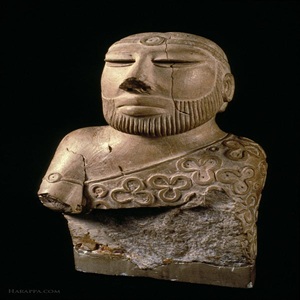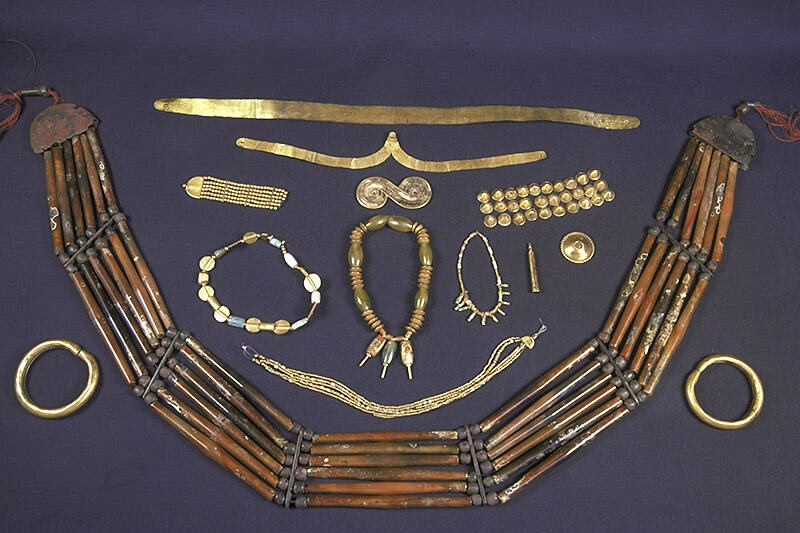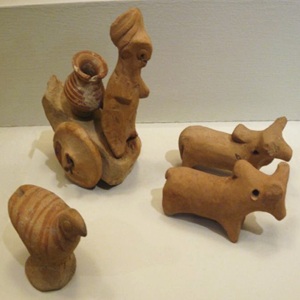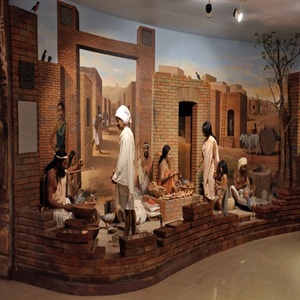Introduction
The social life of the Indus Valley Civilization was well-organized, disciplined and culturally advanced. People lived in planned cities like Harappa and Mohenjo-daro. People were engaged in agriculture, trade, handicrafts and various forms of entertainment. They lived a balanced and harmonious life. Overall, their social life was a blend of simplicity, organization and sophistication. It continues to fascinate not only historians but also the common people today and forever. Here is a glimpse into it..
Salient Features
1. Family system: A specific family system is found in Harappan culture. The members of a family lived collectively. The family system here is matriarchal family system.
2. Social classes: There was no specific caste system during the Harappan culture. However, according to Dr. V.D. Pusalkar, it was divided into 4 divisions based on profession: educated class, military class, artisan class and labor class. This social structure indicates the level of complexity and organization. It is known that the Indus people performed their responsibilities according to their class.
3. Marriage system: There is no specific information about the marriage system during the Harappan civilization, it is known that a consanguineous marriage system existed
4. Position of women: The position of women was important during the Harappan culture. Women were worshipped as mother goddesses. The worship of the Mother Goddess reflected a respect for women and fertility. In a way, a matriarchal family system was seen.
5. Position of men: The position of men in society was predominant, and the man was considered the head of the family.
6. Diet: The diet of the Harappans was diverse. The people of the Harappan civilization were mixed eaters. Both vegetarians and non-vegetarians existed. Vegetarians used grains like wheat, rice and barley along with milk, vegetables and various milk products. Fruits like dates and pomegranates were also common. Carnivores used animals such as sheep, goat, deer, cattle, and pigs for meat. They used spices to flavor their dishes.
7. Animal husbandry: Animal husbandry played a crucial role in the livelihood of the Indus people. They domesticated a variety of animals including cows, bulls, buffaloes, donkeys, dogs, sheep, goats, and pigs, which contributed to their agricultural and economic activities.
8. Clothing: It is impossible to be specific about the clothing worn by men and women during the Harappan period. The figures of both men and women found during the research period are nude. The question arises whether they did not wear clothes at all. It is believed that during the Paleolithic period, cotton and woolen clothing was worn based on scraps of cotton cloth and sheep farming. Men wore dhoti and uttaria, while women wore sarees.
The clothing of the Indus Valley Civilization was predominantly made of cotton and wool. This choice of fabric reflects their advanced textile production techniques.
9. Cosmetics: The Indus Valley Civilization placed great importance on personal adornment and grooming. Evidence suggests that they used a variety of cosmetics, including lip balm, eye gel, face balms, and powders. They also used copper mirrors and ivory combs. This indicates a sophisticated approach to their personal care for the time. Boxes were often used to store jewelry and cosmetics.

10. Hairstyle: Both men and women in the Indus Valley Civilization took pride in their hairstyles. It was common for individuals to comb their hair back and tie it in a bun. The artistic figurines of a girl in a dancing pose found at Mohenjodaro display unique hairstyles. Men usually left their beards intact and shaved their moustaches

11. Jewelry: Jewelry held significant cultural significance among the Indus Valley Civilization. Both men and women adorned themselves with various types of jewelry. Jewelry such as necklaces, anklets, finger rings, waist belts, bracelets, anklets, etc. have been found during the excavations. These jewelry were made from materials such as gold, silver, copper, ivory, shell, and ceramics. They have intricate designs and shapes.

12. Toys: Children of the Indus Valley Civilization enjoyed a variety of toys, reflecting the creativity and craftsmanship of the civilization. Artifacts such as bamboo dolls, clay figurines, marbles, and miniature animals have been found, with Chand Daro being identified as a significant toy manufacturing center of the period.
13. Entertainment: The people of Harappan civilization were entertainment lovers. They played many sports in their free time. Chess, Pagade, dancing, singing were indoor games. But outdoor sports included hunting, fishing, bullfighting and cockfighting. They used to make dolls made of clay for the amusement of children. This explains the rich cultural life.
14. Household items: A number of household items have been found that illustrate the daily life of the Indus people, including mats, knives, axes, cooking utensils, spoons, bowls, mirrors, and furniture such as chairs and tables. These artifacts reflect their practical needs and advanced craftsmanship.
Epilogue
The social life of the Harappan or Indus Valley Civilization was highly organized, sophisticated, and advanced for its time. The society followed a matriarchal family system, where women held a prominent position and were worshipped as mother goddesses. However, men were still considered the heads of households. There was no rigid caste system; instead, society was divided into professional classes such as scholars, soldiers, artisans, and laborers. The Harappans led a balanced and diverse lifestyle. Their diet included both vegetarian and non-vegetarian foods such as grains, fruits, dairy products, and meat. Animal husbandry formed the backbone of their economy. Their clothes, made from cotton and wool, demonstrated their advanced textile skills. In addition, features such as the use of cosmetics, mirrors, and combs indicate that they were beauty lovers. Children played with toys made of clay and bamboo, and people enjoyed a variety of entertainment, from music and dance to games such as chess, hunting, and bullfighting. Overall, the Harappan social system depicts a vibrant, cultured, and progressive civilization that valued beauty, balance, and harmony in daily life.

